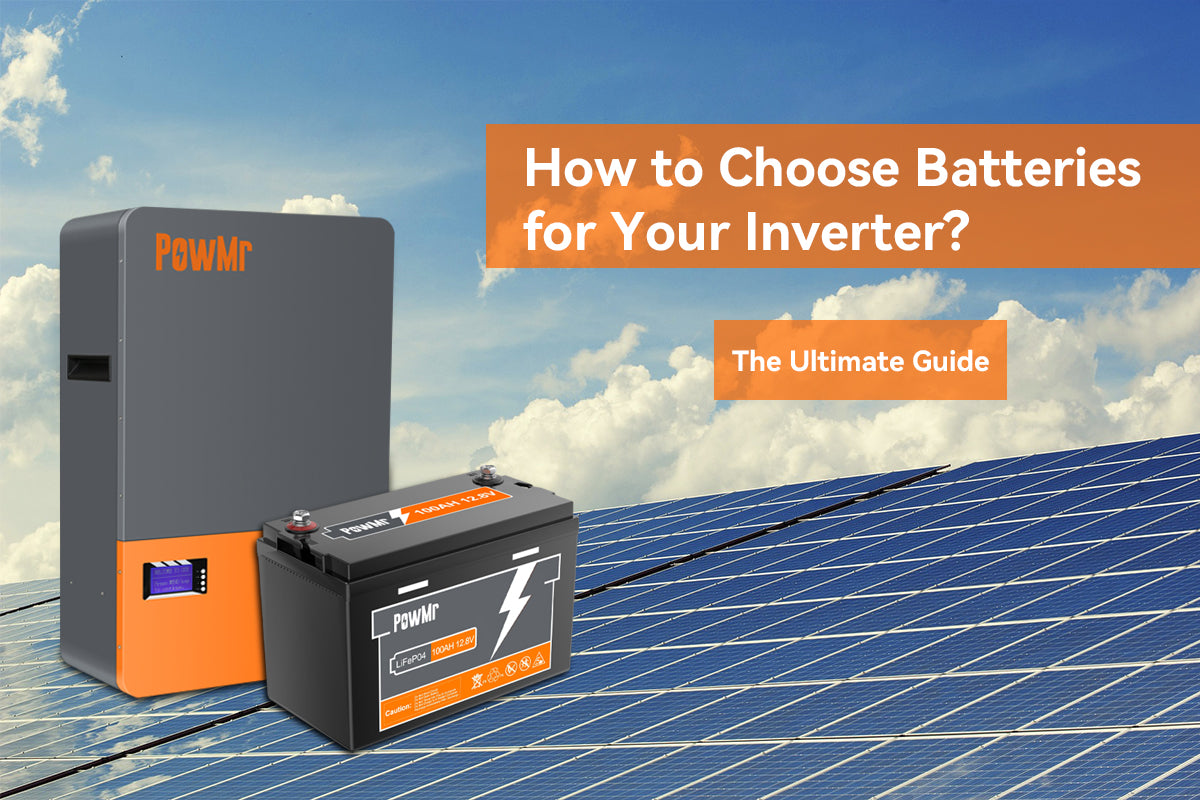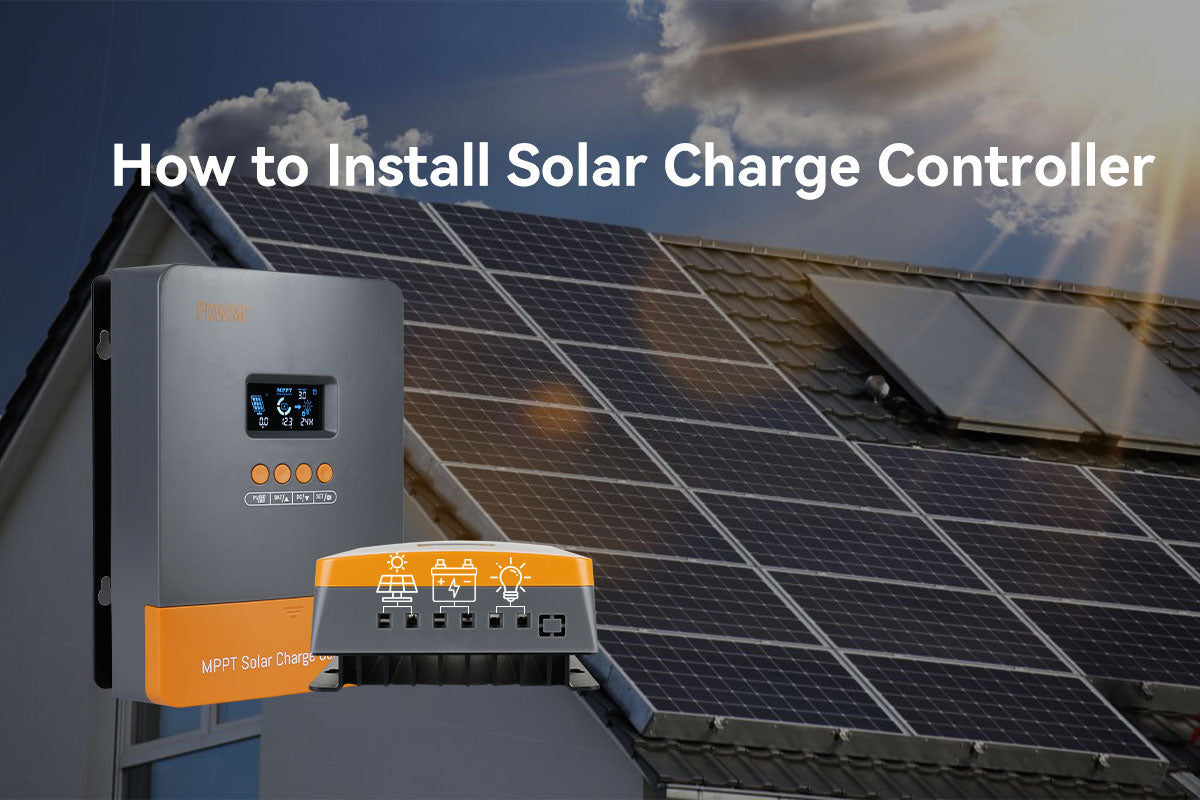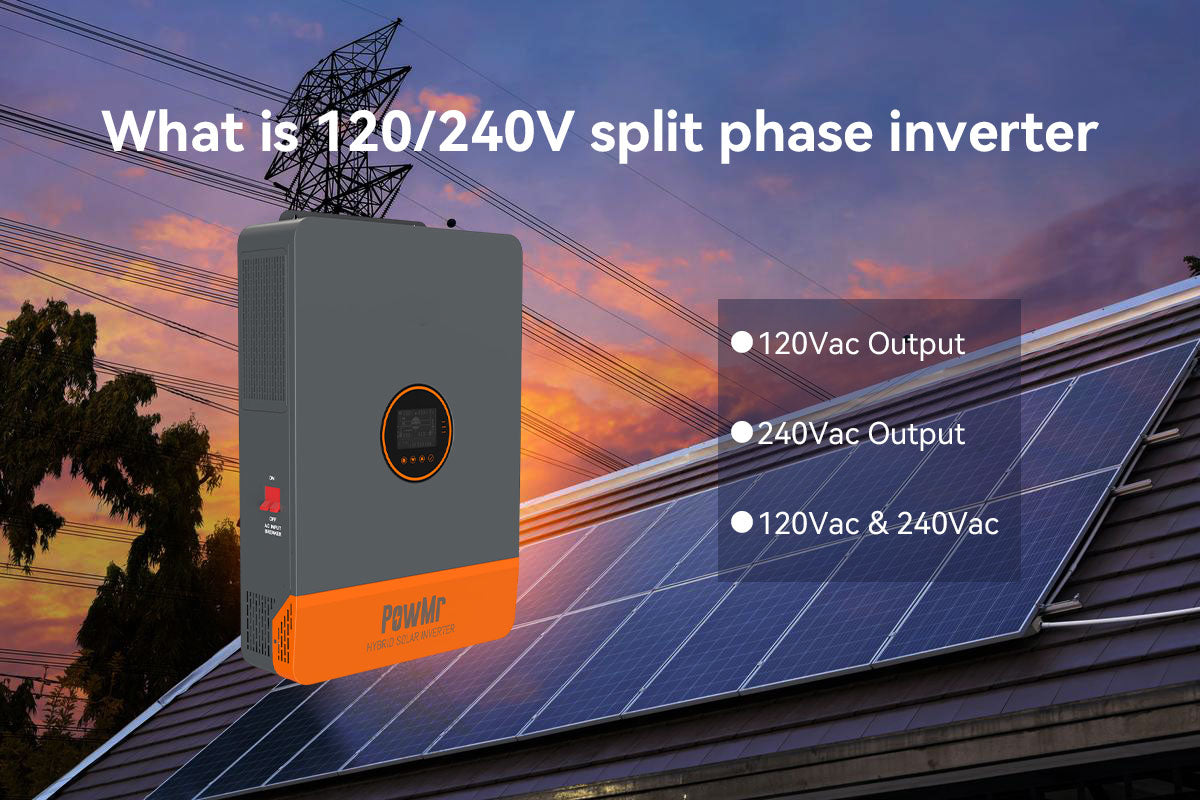Thinking of buying a storage battery? You might have heard and be confused: what exactly are AGM batteries, Gel batteries, lithium batteries, lead-acid batteries? What are the differences between them?
This article will revolve around how to select solar batteries types and size for your inverter.
- How does a battery for inverter work in a solar power system?
- Store the electricity during the day
- Power appliances at night
- Stabilize the power of the solar power system
- What are the different types of solar batteries?
- Which type of battery is best for my inverter?
- What size of solar batteries for my inverter?
How does a battery for inverter work in a solar power system?
Generally speaking, batteries are an indispensable part of a solar power system because they allow us to store power generated by the solar panel in the battery, ensuring that the user has power available when the solar panels and the grid are running low. Add a battery to a solar power system enhances the capabilities of the solar power setup by providing a dedicated storage solution. In summary, the battery plays the following three roles in the solar system:
Store the electricity during the day
Since people's demand for electricity is not high during the day, the power generation time of the PV system is not equal to the load power consumption time. The direct sunlight collected by the solar panel is transformed into DC electricity, part of the electrical energy is converted to AC electricity for load operation by the inverter, and the remaining electrical energy is stored in the battery.
Power appliances at night
The output power of the inverter reaches its highest at noon, but the demand for electricity is not high at that time, while at night is the peak of electricity consumption, the public's demand for electricity rises, the battery releases power to the load.
Stabilize the power of the solar power system
PV input voltage and output voltage of the inverter are not always the same, PV input voltage is affected by radiance and is in a fluctuating state, and the load side is not very stable.
Energy storage battery can be regarded as a power balancing device at this time, when the PV input power is greater than the load power, the inverter dispenses the excess energy to the battery bank for storage, when the electricity generated by the solar panel cannot meet the needs of the load, the inverter diverts the electricity from the battery to the load again.
What are the different types of solar batteries?
Currently, there are mainly two types of battery on the market: lead-acid battery and lithium battery, both of them have their own advantages and disadvantage and can be subdivided into several types of batteries, and here we will introduce the more common batteries in the solar industry.
Lithium battery
Lithium battery is light weight, high energy storage, no pollution, long service life, driven by sustainable development, it will become increasingly popular.
-
LiFePO 4/LFP:
One of the most popular batteries, whose main features are no harmful elements, low cost, the very best in safety and cycle life. For example, PowMr 100AH 48V LiFePO4 Battery has a long service life, more than 6000 cycles, 100A continuous discharge current, and wide operating temperature range. -
LiCoO 2:
The most mature lithium-ion battery with the advantages of high specific capacity, good cycling performance and simple synthesis process. However, the material contains more toxic cobalt elements and is more expensive, making it difficult to ensure safety when making large power batteries. -
LiNiMnCoO 2/NMC:
The positive electrode material of NMC combines nickel and manganese, and this material can be balanced and regulated in terms of specific energy, cyclability, safety and cost.

Lead acid battery
Lead acid batteries are mainly composed of positive and negative plates, spacer plates, sulfuric acid electrolyte, battery tank and other components, but they are not designed to be fully discharged all the time (i.e., only 50% of the depth of discharge).
-
Flooded lead acid battery:
This kind of battery has a cap at the top which can ventilate and block the liquid spill. In the process of use, due to the loss of water evaporation and decomposition, the cap needs to be opened periodically to add distilled water and adjust the electrolyte density, so it is customarily called "open type traction battery". -
Valve-regulated lead acid battery:
Valve regulated sealed lead-acid battery, also known as maintenance-free battery, is divided into two types: AGM and GEL battery. The electrolyte inside the battery is in a non-flowing state, and the battery remains gas-tight and liquid-tight during normal use. -
Tubular battery:
The technology used in tubular batteries seals the active material in a polyester tube called armor, rather than affixing it to the surface of the cell plate. As a result, there is no peeling or corrosion, ensuring a long battery life.
Which type of battery is best for my inverter?
Choosing between LiFePO4 and Lead Acid batteries for solar systems requires considering efficiency, lifespan, and environmental impact.
Where lithium-ion batteries are used
Lithium-ion batteries offer versatility and durability, making them a standout choice. They excel in both off-grid and grid-tie setups due to their high energy density and flexibility. Lithium-ion batteries are not only well-suited for off-grid solar systems but also for on-grid applications where energy storage, load shifting, and peak shaving are crucial.
Moreover, lithium-ion batteries, like LiFePO4/LFP and LiNiMnCoO2/NMC, offer enhanced safety features compared to lead-acid batteries. They provide longer lifespans, deeper discharge capabilities, and require minimal maintenance. This adaptability across various scenarios, combined with their robustness, positions lithium-ion batteries as a preferred option for energy storage needs, ensuring reliable and efficient power supply.
Where lead-acid batteries are used
Lead-acid batteries find their niche in off-grid solar installations and backup power systems. Their cost-effectiveness and reliability make them a popular choice for these applications. However, their limited depth of discharge and maintenance requirements can be drawbacks.
What size of solar batteries for my inverter?
Configure the battery for the inverter mainly considering the following three factors:
- Power Autonomy Duration
- Total Load Consumption and Inverter Efficiency
- Battery Voltage Compatibility and Depth of Discharge
Power Autonomy Duration
Power autonomy duration refers to the length of time a backup battery can sustain power supply during a blackout. You can choose different backup durations according to your needs, such as 4 hours, 8 hours, and so on. Make sure to select an appropriate backup duration based on your specific situation to meet your energy requirements.
Total Load Consumption and Inverter Efficiency
When considering the purchase of a solar inverter, you need to take into account the total power consumption of the loads expected to be powered by the solar system.
Additionally, you should consider the inverter's efficiency, as there is energy loss when the inverter converts the direct current from the solar cells into usable alternating current.
To ensure that the battery can fully support the load during a power outage, you need to add the total power consumption of the load to the energy lost during the inverter's conversion process.
Total Required Power = Total Load Power + Inverter Rated Power * (1 - Inverter Efficiency)
Taking a 3000W inverter with 95% efficiency as an example, assuming a total load power of 3000W, the calculation is as follows:
Total Required Power = 3000W + 3000W * (1 - 0.95) = 3150W
Battery Voltage Compatibility and Depth of Discharge
When selecting batteries, it's important to ensure that the chosen battery's rated voltage is compatible with the inverter and matches the system voltage.
Additionally, the depth of discharge is a critical consideration. Depth of discharge refers to the percentage of the battery's capacity that can be discharged without damaging the battery itself.When choosing a battery for a solar system, it's crucial to select the best deep cycle battery for optimal energy storage and long-term performance.
Assuming the selected battery has a rated voltage of 48V and a depth of discharge of 80%, it means you can use 80% of the battery's capacity to support the loads without damaging the battery. Based on the calculated total power, if the battery backup time is 4 hours, you can calculate the required battery capacity in kWh:
Required Battery Capacity (kWh) = Total Power (kW) × Battery Backup Time (hours) / Depth of Discharge
Required Battery Capacity (kWh) =3.15 kW × 4 hours / 0.8 = 15.75 kWh
Typical battery capacity is measured in ampere-hours (Ah) and represents the amount of energy a battery can discharge at a rate of one ampere over one hour.
To converter kilowatt hours into ampere hours, you should divide the kilowatt hours by the voltage and then multiply the result by 1,000.
Required Battery Capacity (Ah) = kWh * 1000 / Battery Voltage (V)
Given a battery voltage of 48V:
Required Battery Capacity (Ah) = 15.75 kWh * 1000 / 48V ≈ 328.125 Ah
Once you have the battery capacity in Ah, you can determine the required number of batteries based on the market battery specifications.
Taking all these factors into consideration will allow you to better plan and configure your backup power system to meet your energy needs while ensuring system reliability and efficiency. When selecting specific equipment and parameters, it's advisable to consult with professional energy system engineers for more detailed and personalized advice.



